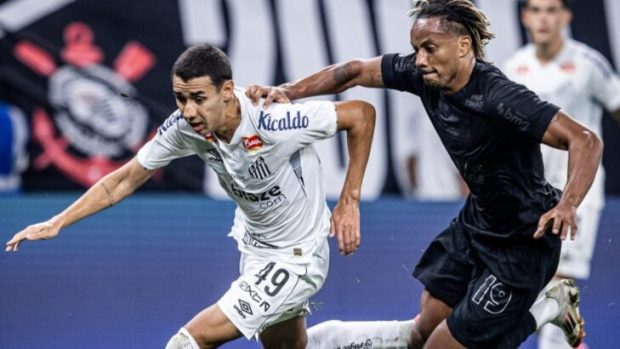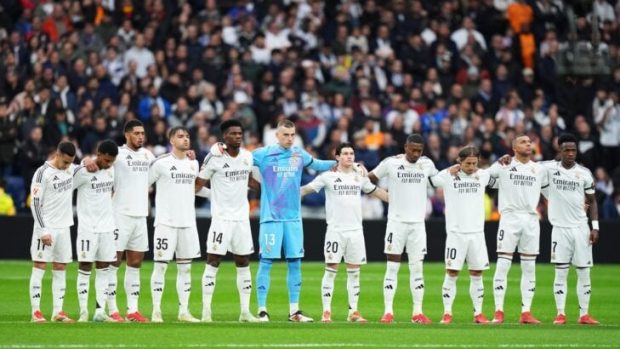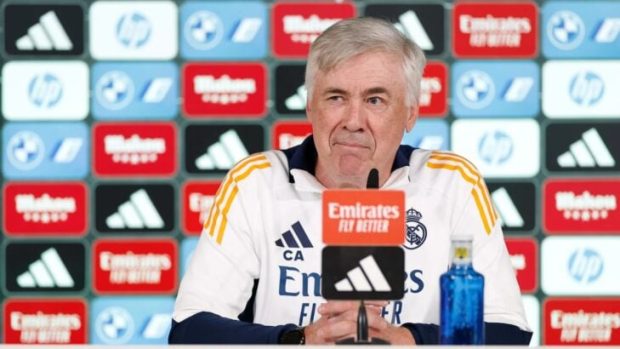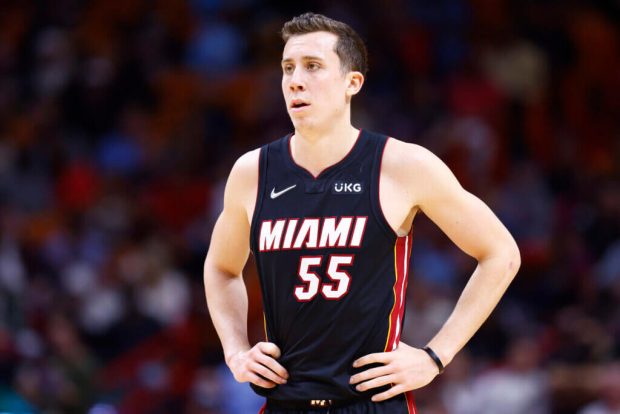It’s an interesting twist that the best team at offensive corners across the past four Premier League seasons is having problems defending them.
Since the 2021-22 campaign, Arsenal have scored the most goals from corners in the Premier League (55), and when adjusting for equal opportunity by dividing by the number of corners each team has had in that period, they still top the charts, with a rate of 5.9 goals per 100 corners taken.
On the other hand, Arsenal’s record from defensive corners this season should raise some red flags. The recent goals conceded against Bournemouth, Crystal Palace and Brentford haven’t bypassed Mikel Arteta and his staff.

Set-piece coach Nicolas Jover has made a big impact at Arsenal (Justin Setterfield/Getty Images)
“It’s not only what you score, it’s the difference in gap between the ones that you score and the ones that you conceded,” said Arsenal’s manager after the 2-1 defeat against Bournemouth this month. “We have conceded a lot, especially recently, which is costing us a lot of points. That’s everybody’s responsibility.”
In the 2024-25 Premier League season, Arsenal have conceded seven times from corners, averaging out as the worst goals-per-100-corners-conceded rate in the league (6.6) — a stark contrast to their effectiveness from attacking corners.

Arteta’s side deploy a hybrid setup on their defensive corners, consisting of four or five zonal defenders, two players to defend the short corner and the area near the penalty spot; the rest are man-markers.
However, Arsenal adapt their setup based on the opposition’s strengths as well, which is why the number of zonal and man-markers fluctuates between games.
In this example, from the 2-1 victory against Fulham in April, Arsenal’s setup consists of five zonal markers (yellow), four man-markers (red), and Gabriel Martinelli (white) defending the short option.

That corner against Fulham was the first they faced after Gabriel and Kai Havertz’s long-term injuries. That duo occupy zonal roles in Arsenal’s defensive corners and are essential pillars of the team’s organisation.
Alongside William Saliba, who mainly defends the far post, Havertz and Gabriel are responsible for the near post and the central zone.

But since Havertz and Gabriel have been absent, there has been a drop in Arsenal’s ability to defend the near post on corner kicks. This shouldn’t come as a surprise because the duo are impeccable in defending that zone — Gabriel and Havertz have cleared 72 per cent (21 out of 29) of Premier League corners when it was clearly their responsibility to win the aerial duel.
Another point to note is that opponents have rarely targeted Arsenal’s far post this season, which adds to the importance of having Havertz and Gabriel available.

The average quality of chances Arsenal face from corners has increased in Havertz and Gabriel’s absence. Looking at the rate of expected goals (xG) conceded per 100 corners in the Premier League this season, Arsenal’s rate without Havertz and Gabriel (4.9) is the fourth worst in the league.
Meanwhile, before their long-term injuries, Arsenal’s 3.1 xG conceded per 100 corners was the fifth best in the Premier League this season.
Overall, Arsenal’s rate of 3.5 xG conceded per 100 corners in the 2024-25 Premier League isn’t disastrous, but there are clear areas to improve.

One factor behind the low quality of chances Arsenal have faced in the Premier League this season is that the majority (24 per cent) come from the central area between the penalty spot and the edge of the 18-yard box.
However, low-quality chances from corners don’t necessarily equate to success for the defensive team because the attacking side may be targeting a weakness in defending that zone.
Advertisement
In addition, these shots might be occurring in the second phase of corners, where low-quality shots have proved useful. In that phase of play, Arsenal need to be more aware of players on the edge of the penalty area.
In this example, from the 2-1 victory against Tottenham Hotspur in January, Dejan Kulusevski plays a corner short to Pedro Porro and the right-back puts the cross into the penalty area.

Gabriel clears the ball, but it falls for Son Heung-min by the edge of the penalty area…

… and the forward’s shot deflects into the back of the net.

The issue in the previous example is that there are too many Arsenal players concerned with the cross, and they don’t move up in time to block the second-phase shot.
The other area of concern is Arsenal’s vulnerability to late runners into the penalty box. Earlier in the season, Arteta’s side conceded from two corners against Manchester City and Bournemouth, where a late runner into the penalty area was instrumental to the move.
Leandro Trossard and Saliba’s red cards affected the defensive organisation in those games, but Arsenal conceded similar goals against Bournemouth and Crystal Palace at the Emirates.
In this example, against Palace last month, Arsenal are defending with three zonal players towards the near post (yellow), Martinelli against the short option, and the remainder man-marking.

As for Palace, Justin Devenny and Maxence Lacroix (red) are positioned inside the six-yard area in front of four runners: Daniel Munoz, Eddie Nketiah, Marc Guehi, and Jefferson Lerma (white). Meanwhile, Eberechi Eze is positioned outside the penalty area.
As Adam Wharton starts his run to take the corner…

… Munoz, Guehi and Lerma make dummy runs towards the far post to force their markers deeper and increase the space for Eze, who is making a late run into the box to attack the cross.
During Wharton’s run-up, Trossard notices Eze, but he can’t leave his man (Munoz) until the ball is already in the air…

… which prevents the Belgium forward from blocking Eze’s shot, which hits the post and goes into the back of the net.

In the other example against Bournemouth, Arsenal have four zonal players (yellow) across the six-yard area, five man-markers (red) and Bukayo Saka (white) defending the area near the penalty spot.

Bournemouth’s attacking setup has Tyler Adams and Illia Zabarnyi (red) inside the six-yard area, David Brooks, Evanilson, Antoine Semenyo and Dean Huijsen behind them, with Marcus Tavernier and Milos Kerkez (yellow) by the edge of the penalty area.

As Alex Scott prepares to take the corner, Brooks and Adams (red) pin Myles Lewis-Skelly and the first zonal marker at the near post, Ben White.
Near the penalty spot, Bournemouth’s routine manipulates Arsenal’s man-markers when Semenyo and Huijsen (white) drop outside the penalty area to cover for Tavernier and Kerkez, who are overloading Saka and making late runs towards the near post.
Scott’s cross targets that area…

… and Saka fails to defend the late runs due to the one-versus-two scenario against Tavernier and Kerkez (yellow), while Brooks and Adams (red) are blocking Lewis-Skelly and White to vacate the near-post zone.
Tavernier connects with the cross and flicks the ball towards Evanilson…

… who scores the winner.

There is no doubt about Arsenal’s effectiveness on attacking corners, but even after the returns of Havertz and Gabriel, there will be areas to improve on the defensive side.
More alertness about opponents shooting on the second phase of corners and awareness about routines that manipulate man-markers to create space for late runners are clear starting points.
For Arsenal to maintain their status as one of the best set-piece teams in the world, their defensive solidity at corners needs to match their offensive prowess at the other end.
This news was originally published on this post .











Be the first to leave a comment